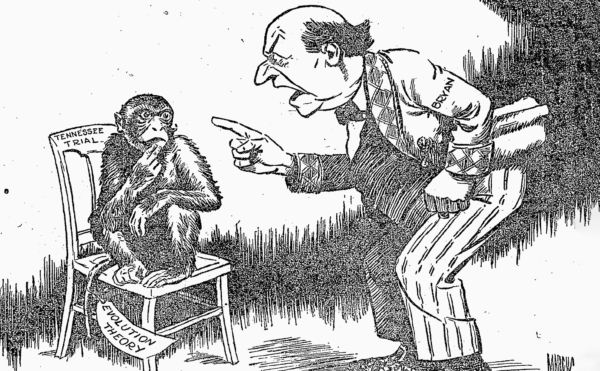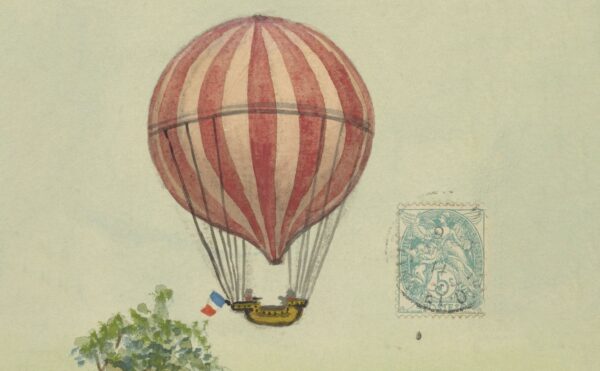There have been conspiracy theories swirling for decades after the death of nine Russian hikers. They seemed to perish in gruesome and unexplainable ways. It was a true crime mystery until recently when scientists stepped in to take another look.
About The Disappearing Spoon
Hosted by New York Times best-selling author Sam Kean, The Disappearing Spoon tells little-known stories from our scientific past—from the shocking way the smallpox vaccine was transported around the world to why we don’t have a birth control pill for men. These topsy-turvy science tales, some of which have never made it into history books, are surprisingly powerful and insightful.
Credits
Host: Sam Kean
Senior Producer: Mariel Carr
Producer: Rigoberto Hernandez
Associate Producer: Sarah Kaplan
Audio Engineering: Rowhome Productions
Transcript
Before I begin, a heads up: this episode contains some gruesome and graphic moments.
The rescue team was baffled. They couldn’t make any sense of the scene. How had these five hikers died? And where were the other four bodies?
It was February 1959, at an icy mountain pass near Siberia. Nine hikers had gone missing there recently, and the rescuers arrived to find five bodies scattered about—some burned, some nearly naked. One had human flesh in his mouth.
There was no apparent cause of death, and all nine hikers were quite experienced. So why had they abandoned their tent and run half-naked into the forest? Had there been an accident? Were they attacked?
No one knew. And for six decades, those unanswered questions provoked fierce debate and dark conspiracy theories among locals—the Russian equivalent of Roswell.
Last year, however, scientists finally determined what happened at that snowy mountain pass. It’s a strange tale, involving cadavers and a Disney movie. But at long last, we know why those burned, naked, and very dead bodies turned up in the Siberian wasteland.
In 1959, a twenty-three-year-old Russian engineering student named Igor Dyatlov recruited eight university friends for an expedition. He wanted to climb a peak in the remote Ural Mountains.
The team ranged in age from 20 to 24, and included two women. The Soviet government also sent along a 38-year-old minder, making ten people total. All were experienced skiers and winter-campers.
They were unbelievably tough as well. On a previous expedition, a hunter accidentally blasted one of them with his shotgun. Instead of waiting for a medevac helicopter, she hopped right up, and cheerfully skied fifty miles to the nearest clinic. No sweat.
That toughness would prove necessary on Igor Dyatlov’s expedition, because they planned to visit the Ural Mountains in February, the harshest time of year there.
Despite the danger, the hikers had a grand time on the train trip out. They hid beneath the seats to avoid paying for tickets. One brought a mandolin, which he strummed for everyone to pass the time.
After the train, they took a series of buses, trucks, and horse-drawn sleighs to a frontier village. At this point, one hiker bowed out. He was having knee pain, and he told the others to continue without him. He never saw them alive again.
The trek began January 28th. It would be 215 miles roundtrip. The landscape was mostly rolling forests of birch, fir, and cedar trees. The snow was piled pretty deep in places, up to five feet. Wind gusts reached 60 miles per hour.
On February 1st, the team tried to cross a treeless pass between two mountains. One mountain was named Kholat Saykhl, or Dead Mountain.
The crossing should have been an easy ski. But a blizzard swept in and disoriented them. Instead of slipping through the pass, they ended up climbing the lower slope of Dead Mountain.
They realized their error near nightfall. At this point, Igor Dyatlov decided not to retreat down-slope a mile, where a forest offered shelter. His team had already climbed pretty high. He didn’t want to have to regain the elevation tomorrow. Instead, they would camp on Dead Mountain.
To shelter themselves from the wind, the hikers removed the shovels from their packs and dug down four feet into the snow. After creating a hollow, they pitched their communal tent inside it.
Then they hunkered down to eat and sleep. A few also wrote in their journals—the last living records of them before their deaths.
The hikers were scheduled to return home February 12th. But delays were common on long hikes, so when the 12th came and went, no one worried. Then the 13th passed, and the 14th. By the 15th, friends and family were fretting. Where were they? On the 16th, local officials mobilized a rescue party and set out.
On February 25th, the rescuers found some ski tracks and followed them to the tent. It was half-buried in snow. There were gashes in the tent’s walls, as if someone slashed their way in. Seeing this, the rescuers swallowed hard. Had the hikers been murdered?
From the tent, they found some footprints leading away. Oddly, some were barefoot prints—they could see the outlines of people’s toes. Why hadn’t they worn boots?
A mile downhill, near the forest, they found the remnants of a fire—as well as two bodies. One was the mandolin player. Both men had patches of scorched, blackened skin and were wearing only underwear. One had also bitten off a chunk of his own hand.
Eventually, the searchers found three more bodies scattered nearby, including Igor Dyatlov. All three victims had been trekking uphill, probably toward the tent. But they never made it in the blizzard, and froze to death.
Search as they might, the rescuers could not find the other four bodies. So they dug out the tent, and helicoptered everything back to a police station. There, they examined those mysterious slashes in the tent walls. It seemed like evidence of a crime.
But that day, a seamstress happened to be visiting the station, to mend some police uniforms. She examined the slashes herself, and declared that nyet, nyet—the officers were wrong. Her expert eye could see that no one had slashed into the tent. Instead, the campers had slashed their way out.
This baffled the police further. Why would experienced winter-campers do that? Autopsies soon revealed that all five had died of hypothermia.
Meanwhile, a few months later, a hunter passed through the forest beneath Dead Mountain. There, he came across a strange pit—ten feet deep, and 250 yards from where the first bodies were found. Peering down, he saw a bed of tree branches—as well as scraps of clothing.
He alerted rescuers, who returned to the scene. They probed around the pit with long poles, which emerged with chunks of human flesh attached. They quickly dug out the four missing bodies. All four were lying facedown in a buried creek.
But that wasn’t all. The first five bodies had all been relatively intact and uninjured. Not these four. Autopsies revealed cracked ribs and fractured skulls. One man had shards of bone driven into his brain.
More gruesomely, their faces were missing eyeballs, tongues, and lips. Two of the hikers were wearing clothes from their dead comrades.
At this point, for unknown reason, Soviet party officials swept in and shut the investigation down. They declared that an avalanche had killed the party, then confiscated all documents related to the matter.
But that explanation didn’t sit right with people. Hunters who lived near Dead Mountain had never seen an avalanche there. Plus, avalanches leave obvious signs afterward—acres of dislodged snow. But the rescue team had seen no such signs when they arrived.
There were other anomalies, too. Avalanches won’t fall unless the snow is sitting on a slope steeper than 30 degrees. But the slope where the hikers camped was gentler than that. Also, avalanche victims rarely die of blunt-force trauma; they suffocate. But the four buried victims had shown blunt-force trauma. Why?
Overall, the avalanche explanation seemed bogus. And the more Soviet officials insisted on it, the more people suspected a coverup.
But a coverup of what? Given the paltry evidence, conspiracy theories started running amok. Some people blamed bigfoots and yetis. Others blamed missile tests gone awry, or a lovers’ quarrel that spiraled into a Hatfield-McCoy tragedy. Still others cited a supposed CIA plot, or even a hurricane—in Siberia! But no one knew.
And there things might have stood—a mess of half-baked, unprovable theories—if not for two determined scientists, and the lucky viewing of a Disney movie.
Alexander Puzrin is a geological engineer in Switzerland. Although born in Russia, he had never heard about the tragedy near Dead Mountain growing up. But in 2019, Puzrin came across a mention and quickly grew obsessed. He devoured everything he could about the deaths. But unlike other obsessives, Puzrin had the scientific skills to test the avalanche theory.
For additional brainpower, Puzrin recruited another Swiss scientist, Johan Gaume, who runs avalanche simulations. Together, they pored over documents from the case, trying to piece together what happened. And despite all the objections, they realized that the avalanche theory was stronger than people suspected.
Again, avalanches require slopes of at least 30 degrees. And the snowy slope below Dead Mountain was gentler than that overall.
But beneath that snow, on the ground itself, there was a lot of local variation. The ground was actually more terraced, with waves of flatter and steeper parts. And many of the steeper parts were 30 degrees.
The Swiss scientists also found a crucial, overlooked detail. The hikers had dug down into the snow to form a hollow for their tent. Soviet officials had examined a cross-section of that snow, and noticed a thin layer of rotten ice. That ice had probably been exposed to the surface months before and melted partly in the sun. Then, several feet of snow covered that weak ice up.
That left the snow on top in an unstable position. One expert compared it to placing a fat dictionary on a ramp on top of potato chips. Given the slope, the dictionary will be prone to sliding at the slightest disturbance. Similarly, snow can slide over weak ice, too.
This sliding of snow over weak ice is called a slab avalanche. Most avalanches involve whole mountainsides of snow. Slab avalanches are smaller. And instead of powdery snow tumbling down, slab avalanches release a single hard dictionary-slab all at once.
The Swiss scientists began to suspect that a slab avalanche had hit the hikers. So they tried modeling one on a computer. But this proved tricky. The physics of snow is surprisingly complicated.
Luckily, around this time, Gaume watched the Disney movie Frozen. The special effects impressed him; the tumbling snow looked quite realistic. So he reached out to the film’s animators, who agreed to hand over the code they used.
With this code, the scientists began running simulations. To their delight, the slab avalanche looked promising as a theory. They proposed that the hikers, in digging out their hollow, had disturbed the slab of snow over the rotten ice. And when the slab eventually shifted, the snow buried the hikers. Even a three-foot-thick slab would have pinned them down under a thousand pounds of crushing weight.
That explained why the hikers slashed their way out of the tent: the door-flaps were blocked. It also explained why several of them fled without boots or coats. It was hard enough getting their own bodies out. They probably couldn’t even find their boots and coats in the buried tent.
Now, however exciting, a slab avalanche couldn’t explain everything. What about the other four hikers, with the skull and rib fractures? Avalanches don’t normally cause blunt-force trauma.
To answer this mystery, the Swiss duo looked into some macabre experiments from Detroit. In the 1970s, car-makers there took 100 cadavers and slammed weights into them at different speeds. They were investigating car accidents, and using the data to design better seatbelts.
In the report, the Swiss duo noticed that some of the cadavers had been propped against rigid backgrounds. And, crucially, those cadavers had worse injuries.
That was a big clue. Remember, the battered hikers were found in a ten-foot-deep pit with branches across the bottom. What if they’d been digging a shelter, and laid the branches as a floor? And what if the shelter collapsed on them? Several tons of snow would have slammed into the branches. In that case, blunt-force trauma seemed likely.
The last remaining obstacle to the scientists’ theory was a big one—that locals had never seen an avalanche on Dead Mountain. So the duo hired some guides and visited the site to investigate.
It was a rough journey there. The wind was so fierce on the way that their snowmobile actually flipped over. But they persevered. At Dead Mountain pass, they flew drones over to capture aerial footage. And lo and behold, one camera captured exactly the type of avalanche they’d predicted—a small slab one.
To be fair, locals had never seen an avalanche because slab avalanches are tiny. Plus, wind tends to cover them up. Remember, the 1959 rescue party didn’t reach the scene until 26 days after the disaster, at which point zero trace remained.
Based on all this, we can finally piece together what happened on Dead Mountain the night of February 1st.
After getting lost, the hikers dug out a hollow for their tent. Unluckily, the hollow was below a hidden, 30-degree slope. The surrounding snow also happened to be lying on top of rotten ice. Eventually, a slab of snow released and crushed their tent.
The hikers sliced their way out, but several could not retrieve their boots or coats. And, probably fearing another avalanche, they hurried downhill to the forest and built a fire.
Unfortunately, the fire barely helped. Two hikers were especially cold. Desperate to keep warm, they leaned dangerously close to the fire—to the point of scorching their skin. They eventually died of hypothermia.
As for why those two were found nearly naked, perhaps their companions removed their clothing afterward, and put it on to protect themselves. Or, people freezing to death can also experience something called paradoxical undressing.
During the end stage of hypothermia, people’s minds often get delusional. Also, their bodies begin to rev and rev their internal furnaces—a last-ditch effort to stay warm. But sadly, given their delusions, people think they’re overheating, and often strip naked to cool down. It’s bizarre, but not uncommon. A delusional mind could also explain why one hiker bit part of his own hand off. He was going mad.
So, that explains two of the deaths. And either before or after those two died, three other hikers set out to find the buried tent and grab jackets, boots, and blankets. But in the dark blizzard, they got separated, and each one froze to death alone.
That left four hikers alive. Eventually, they left their dead companions, hiked into the woods, and began digging a snow pit for protection. This included laying down pine branches.
But more bad luck doomed them. They happened to dig over a local stream that never freezes. The stream had hollowed out a tunnel of ice a dozen feet below. And after they climbed down into the pit, that ice tunnel collapsed, and the overlying snow crushed them against the branches. That explains the trauma to their heads and chests.
As for why they were missing parts of their faces: again, they were found lying face-down in the stream. Their tissue probably either rotted off, or small animals burrowed down and scavenged them before the rescue team arrived in May.
Overall, the hikers’ expertise probably doomed them. Experienced winter-campers fear avalanches more than almost anything. So after the slab avalanche hit, the hikers hurried downhill—probably fearing a second, bigger avalanche.
That was a textbook-smart decision. Usually. But that second avalanche never came. Ironically, if they’d been inexperienced amateurs and just stayed put, they maybe could have dug their tent out and survived.
Now, some people in Russia refuse to abandon their conspiracy theories here. They continue to blame yetis or the CIA for the deaths on Dead Mountain—or, as the area’s known today, Dyatlov Pass, after the expedition’s leader.
But most experts agree that the Swiss team of Puzrin and Gaume has solved the mystery. They’ve given the families of the victims closure at last, and closed the books on one of the strangest adventure tales of the twentieth century.




